How to Grow and Care for Peperomia Albovittata
Overview of Peperomia Albovittata
Peperomia Albovittata, commonly known as Peperomia Piccolo Banda, is a beloved houseplant known for its striking foliage and compact growth. This charming plant features heart-shaped leaves with distinctive silver and green patterns, making it a favorite among plant enthusiasts and interior decorators alike. Its unique appearance and manageable size make it an ideal choice for adding a touch of greenery to any space.
Importance of Growing Peperomia Albovittata
Growing Peperomia Albovittata is not only a rewarding hobby but also offers several benefits. This plant is relatively low-maintenance, making it perfect for both novice and experienced gardeners. Additionally, its attractive leaves can enhance the aesthetic appeal of your home, and its ability to thrive in various indoor environments makes it a versatile choice. Understanding how to properly care for Peperomia Albovittata ensures a healthy, vibrant plant that can be enjoyed for years.
Understanding Peperomia Albovittata
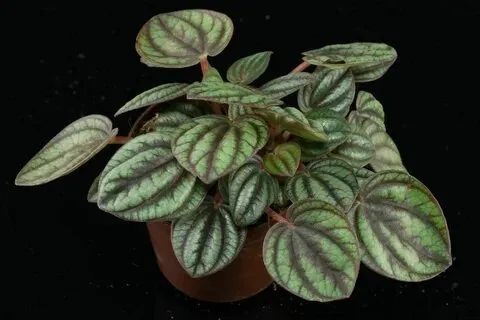
Botanical Classification
Peperomia Albovittata belongs to the Piperaceae family, which includes a wide variety of species known for their ornamental foliage. The genus Peperomia consists of over a thousand species, each with unique characteristics. Albovittata is distinguished by its compact size and striking leaf patterns.
Physical Characteristics
The physical characteristics of Peperomia Albovittata include heart-shaped leaves that are typically 2-4 inches long. The leaves have a textured surface with a mix of silver and green markings, giving them a metallic sheen. The plant itself remains relatively small, usually reaching a height of 6-12 inches, making it perfect for tabletops, shelves, and small pots.
Native Habitat and Distribution
Peperomia Albovittata is native to South America, particularly the rainforests of Ecuador. In its natural habitat, it grows as an understory plant, thriving in the humid, shaded environments of tropical forests. This origin influences its care requirements, as it prefers indirect light and a humid atmosphere, conditions that mimic its native environment.
Explore 15 Peperomia Varieties You Can Grow at Home
Getting Started with Peperomia Albovittata
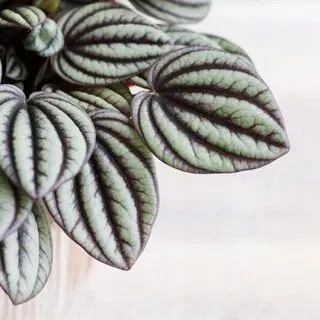
Selecting the Right Plant
When selecting a Peperomia Albovittata, look for a plant with vibrant, healthy leaves free of discoloration or spots. The leaves should be firm and the stems sturdy. Avoid plants with signs of pests or disease. It’s also beneficial to purchase from a reputable nursery or garden center to ensure the plant’s health.
Choosing the Right Spot: Indoors vs. Outdoors
Indoors
Peperomia Albovittata thrives indoors, making it an ideal houseplant. It prefers a spot with bright, indirect light. A north or east-facing window is perfect, as it avoids the harsh afternoon sun which can scorch the leaves. If natural light is limited, consider using a grow light to supplement.
Outdoors
If you live in a warm, humid climate, Peperomia Albovittata can be grown outdoors. Choose a shaded area where it will receive filtered sunlight. Avoid direct sunlight, especially during peak hours, to prevent leaf burn.
Soil Preparation: Importance of Well-Draining Soil
Peperomia Albovittata prefers well-draining soil to prevent root rot. A mix of peat moss, perlite, and a small amount of orchid bark works well. This combination ensures good aeration and drainage, mimicking the plant’s natural habitat.
Planting Steps
- Choose a Pot: Select a pot with drainage holes to prevent waterlogging.
- Prepare the Soil: Mix peat moss, perlite, and orchid bark.
- Planting: Place a layer of soil at the bottom of the pot. Position the plant in the center, then fill around it with the soil mix. Gently pat down to secure the plant.
- Watering: Water thoroughly after planting to settle the soil. Ensure excess water drains out.
- Placement: Place the pot in a spot with bright, indirect light.
I’ve found that using a terracotta pot helps in maintaining the right moisture level, as it allows excess moisture to evaporate.
Peperomia Albovittata Care
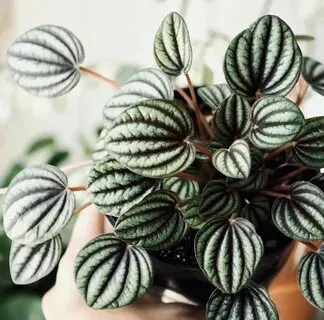
Light
Peperomia Albovittata thrives in bright, indirect light. Too much direct sunlight can cause leaf discoloration, while too little light can lead to leggy growth. I rotate my plant every few weeks to ensure even light distribution, which promotes balanced growth.
Soil
The best soil mix for Peperomia Albovittata is one that is well-draining. A combination of peat moss, perlite, and orchid bark works best. Adding a handful of sand to the mix can improve drainage, especially in more humid environments.
Water
Watering should be done when the top inch of soil feels dry. Overwatering can lead to root rot, while underwatering can cause the leaves to wilt. I water my Peperomia Albovittata once a week, adjusting the frequency based on the season. During the winter months, I reduce watering to every two weeks.
Temperature and Humidity
Peperomia Albovittata prefers temperatures between 65-75°F (18-24°C) and high humidity levels. It can tolerate lower humidity but will thrive in more humid conditions. Placing the plant on a humidity tray or using a room humidifier during dry months has helped my plant maintain lush foliage.
Fertilizer
A balanced, water-soluble fertilizer diluted to half strength works well. Fertilize every 4-6 weeks during the growing season (spring and summer). I follow a bi-monthly feeding schedule, ensuring my plant gets the nutrients it needs without the risk of over-fertilization.
Pruning
Pruning helps maintain the plant’s shape and encourages new growth. Remove dead or yellowing leaves regularly. I prune my Peperomia Albovittata at the beginning of the growing season to encourage bushier growth. Using sterilized scissors prevents the spread of diseases.
Popular Varieties of Peperomia Albovittata
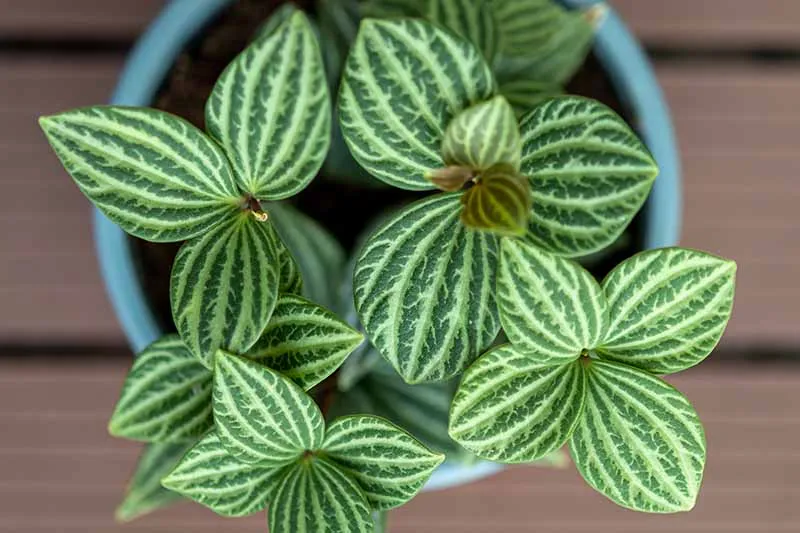
- Peperomia Albovittata ‘Piccolo Banda’: Known for its deep green leaves with dark, intricate patterns.
- Peperomia Albovittata ‘Rana Verde’: Features light green leaves with a more subtle pattern, ideal for brighter spots.
I have both varieties and find that ‘Piccolo Banda’ thrives in slightly lower light conditions, while ‘Rana Verde’ prefers brighter, indirect light.
Pests and Diseases
Common Pests Affecting Peperomia Albovittata
Common pests include spider mites, mealybugs, and aphids. These pests can cause damage to the leaves and stems, leading to stunted growth and discoloration.
Identifying and Treating Diseases
Root rot, caused by overwatering, is a common issue. Leaf spot and powdery mildew can also affect the plant. Treat diseases by removing affected parts, improving air circulation, and using appropriate fungicides if necessary.
Preventative Measures
Maintain proper watering practices and avoid overwatering. Ensure good air circulation and keep the plant clean. Inspect regularly for pests and treat infestations promptly to prevent spread.
Troubleshooting Common Problems
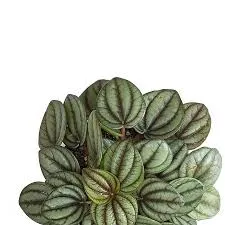
Yellowing Leaves
Yellowing leaves can indicate overwatering, underwatering, or nutrient deficiencies. Check the soil moisture and adjust watering practices. Consider fertilizing if the plant shows signs of nutrient deficiency.
Drooping or Wilting
Drooping or wilting can be caused by underwatering, overwatering, or temperature stress. Check the soil moisture and temperature conditions, adjusting care routines as needed.
Other Common Issues
Other issues include leaf drop, slow growth, and pest infestations. Address these by ensuring proper care conditions and treating pests promptly.
Propagation Techniques
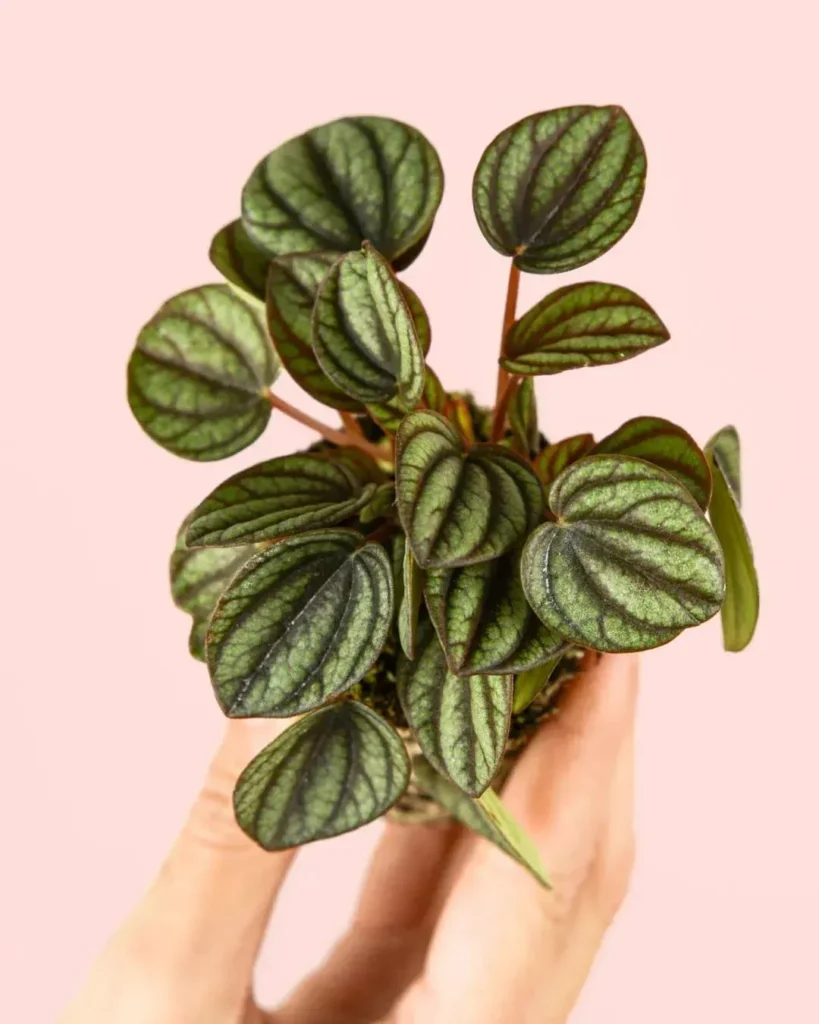
Stem Cuttings (Success Rate: High)
Stem cuttings are the most profitable and favored technique for propagating Peperomia albovittata. Here’s what you will need:
- Sharp pruners or scissors (sterilized with rubbing alcohol)
- Well-draining potting mix
- Pot with drainage holes (small measurement for the cutting)
- Optional: Rooting hormone
Steps
- Choose a healthy stem: Select a non-flowering stem with at least 2–3 nodes (leaf bumps). Ideally, the stem needs to be rigid and barely flexible.
- Make the cut: Using your sterilized pruners, make a smooth cut simply beneath a node. Aim for a diagonal reduction to amplify the floor location for root growth.
- Remove decreased leaves: Strip off the decreased leaves, leaving at least one node bare. This permits the stem to focus its strength on root development.
- Rooting hormone (optional): Dip the reduced end of the stem in rooting hormone powder to inspire quicker root growth. Tap off any extra powder.
- Planting: Moisten your potting combine and make a small, deep enough gap to accommodate the naked stem. Plant the cutting, making sure the node is buried in the soil.
- Create a greenhouse impact (optional): Cover the pot loosely with a clear plastic bag or cloche to hold humidity.
- Light and watering: Place the pot in bright, oblique sunlight. Water sparingly, permitting the pinnacle inch of soil to dry out between waterings.
- Patience is key! Rooting can take quite a few weeks. Signs of success consist of a new increase rising from the node. Once roots are set up (around 4-6 weeks), cast off the plastic cowl and care for your new Peperomia albovittata like a mature plant.
Leaf Cuttings (Success Rate: Moderate)
While much less profitable than stem cuttings, propagating from leaves is nonetheless possible. Here’s how:
- Choose a healthy leaf: Select a mature, plump leaf with a visible petiole (leaf stalk).
- Cut the leaf: Using your sterilized pruners, cut the leaf cleanly at the base of the petiole.
- Planting: There are two options:
- Option 1: Lay the petiole flat on a moist potting mix, partly burying it.
- Option 2: Make a small gap in the soil and insert the petiole at an angle, leaving the leaf itself above the soil.
- Maintain humidity: Cover the pot with a clear plastic bag or cloche to create a humid environment.
- Light and watering: Place the pot in bright, oblique sunlight. Water sparingly to keep the soil barely moist and no longer soggy.
- New growth: With time, tiny plantlets can also sprout from the base of the petiole. Once these have a few units of leaves, you can cautiously separate them and pot them individually.
Remember:
- Use sterilized equipment to stop infections.
- Warmth promotes root growth, so hold a relaxed room temperature (around 65–75°F).
- Be patient! Propagation can take weeks to months, so do not overwater or stock up too soon.
Displaying Peperomia Albovittata

Creative Display Ideas
Display Peperomia Albovittata in decorative pots on shelves, desks, or windowsills. Use hanging planters or terrariums for a unique look. Combine with other plants for a lush, green display.
Combining with Other Plants
Peperomia Albovittata pairs well with other low-light, high-humidity plants like ferns, pothos, and philodendrons. Create a mini indoor jungle by grouping plants with similar care needs.
Indoor vs. Outdoor Display
Peperomia Albovittata is primarily an indoor plant but can be placed outdoors in shaded areas during warm months. Avoid direct sunlight and ensure it’s brought inside before temperatures drop.
Benefits of Growing Peperomia Albovittata
Aesthetic Appeal
Peperomia Albovittata’s unique foliage adds a touch of elegance and beauty to any space. Its compact size and striking patterns make it a versatile decorative plant.
Air Purification
Like many houseplants, Peperomia Albovittata helps purify the air by removing toxins and improving indoor air quality. This contributes to a healthier living environment.
Stress Reduction
Caring for plants has been shown to reduce stress and improve mental well-being. The presence of greenery can create a calming atmosphere and enhance overall happiness.
Conclusion
Peperomia Albovittata is a beautiful, low-maintenance houseplant that adds aesthetic appeal and offers several benefits. Proper care involves providing the right light, temperature, humidity, and watering conditions. Regular pruning, pest management, and occasional fertilizing keep the plant healthy and vibrant.
FAQs How to Grow and Care for Peperomia Albovittata
How often should I water Peperomia Albovittata?
Water Peperomia Albovittata every 1-2 weeks, allowing the top inch of soil to dry out between waterings. Adjust frequency based on light and humidity.
What kind of light is best for Peperomia Albovittata?
Peperomia Albovittata thrives in bright, indirect light. Avoid direct sunlight, which can scorch the leaves. Low light can lead to slow growth.
How do I prevent pests on my Peperomia Albovittata?
To prevent pests, keep your Peperomia Albovittata in well-ventilated conditions and check regularly for signs of mealybugs or spider mites. Wipe leaves with a damp cloth to reduce risk.
